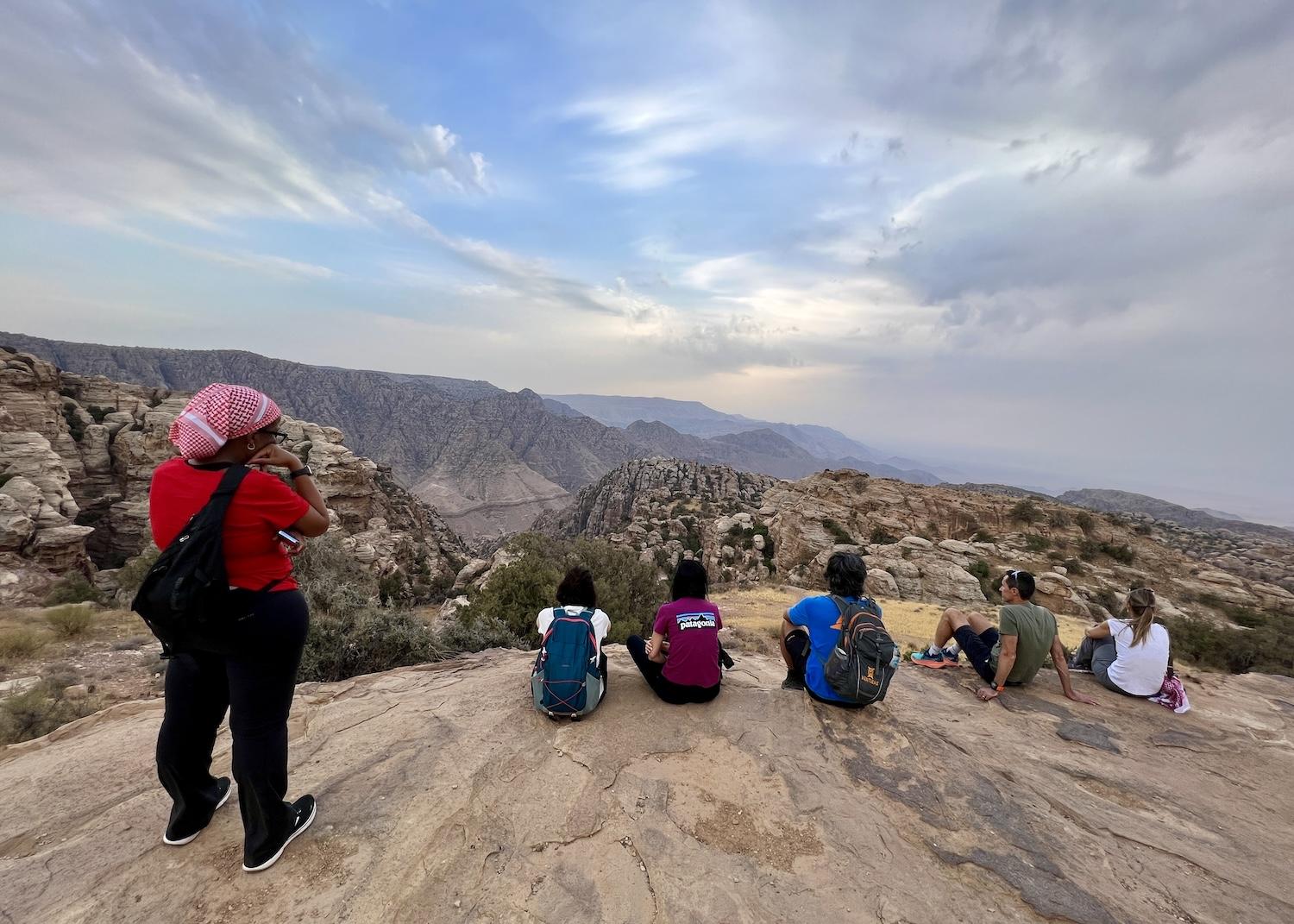
Along the Rummana Campsite Trail in Dana Biosphere Reserve, hikers pause to reflect on the Jordanian landscape/Jennifer Bain
On a hot, dry mountaintop in Jordan’s largest nature reserve, overlooking an astounding network of canyons and sandstone cliffs, I reluctantly put down my camera, closed my mouth and tried to quiet my mind.
“Can we just enjoy the silence here for a moment, guys?” guide Taleb Alsouid had instructed our chatty group of 14 while we hiked the Dana Biosphere Reserve. “I promise all your stress will break after two minutes.”
We had come to the Middle East from around the world, traveling hard and fast in a bus moving from north to south, eating at erratic times and racing through cultural and natural sites to the constant refrain of “yalla, yalla” (Arabic for hurry up, hurry up).
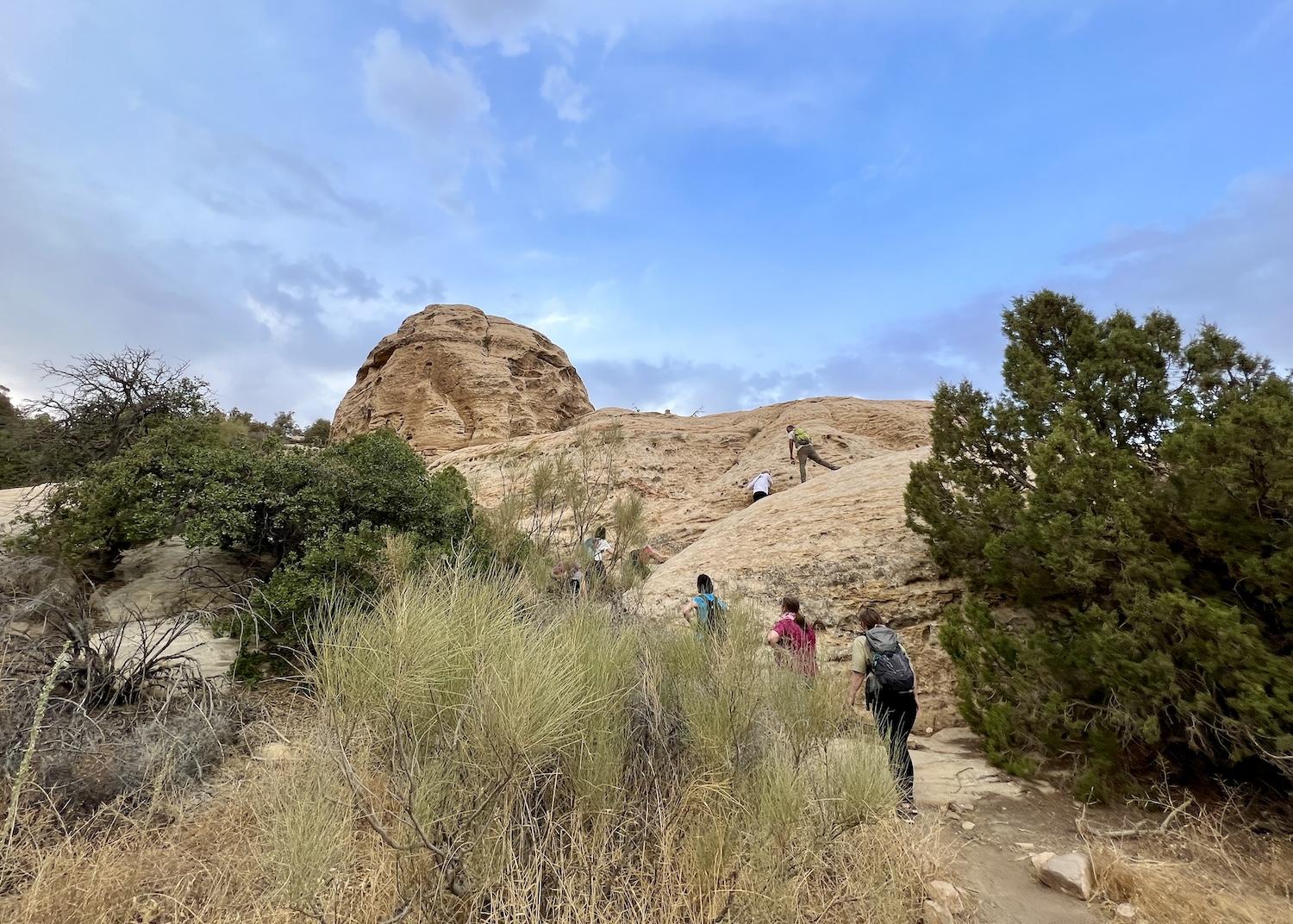
A gentle hike in Dana Biosphere Reserve passes interesting rock formations that remind me of the naturally eroded hoodoos in Alberta's Badlands/Jennifer Bain
“Maybe the big problem in our lives is that we need to be just a little calm and silent,” Alsouid mused as if he knew what we had been up to.
For a few memorable minutes, absolutely nothing happened. And when it came time to resume hiking, I like to think we had all unwound just a bit.
An Adventure Travel Trade Association gathering drew me to Jordan, a traditionally safe and welcoming Arab nation flanked by Israel and the West Bank, Syria, Iraq and Saudi Arabia. But I landed in Amman minutes after the Israel-Hamas war ignited Oct. 7 just two hours away. Friends and family urged me to come home. Jordanians insisted it was business as usual in their hospitable, tourist-friendly country.
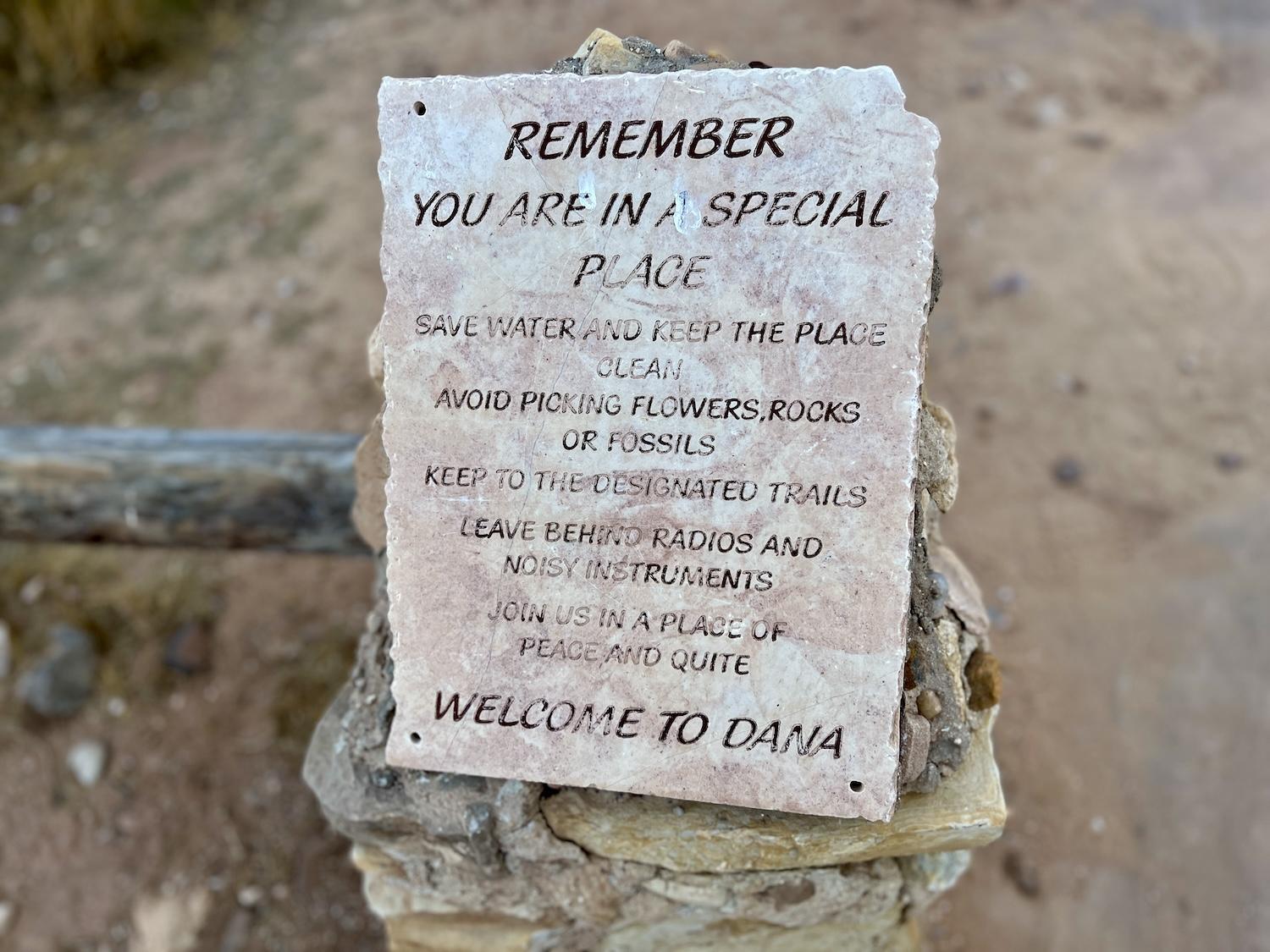
Dana Biosphere Reserve in Jordan promises visitors peace and quiet as they explore a protected place/Jennifer Bain
To be honest, I didn't see or feel any unrest, but moved quickly through the crowded hotspots on my Magic Travels itinerary and lingered at the isolated nature stops.
Unlike the United States and Canada, where the federal government oversees national parks, the Hashemite Kingdom of Jordan gives a non-governmental organization responsibility to protect its natural heritage. The Royal Society for the Conservation of Nature (RSCN) creates, manages and advocates for a national network of protected areas to conserve biodiversity and support local community development.
It was established in 1966 under the patronage of the late King Hussein and has since established 10 protected areas. It has reintroduced endangered Arabian oryx, gazelle and ibex into the wilderness after a captive breeding program, tried to control illegal hunting, created more than 1,000 nature conservation clubs in schools, and developed conservation programs to integrate environmental protection with local socio-economic development.
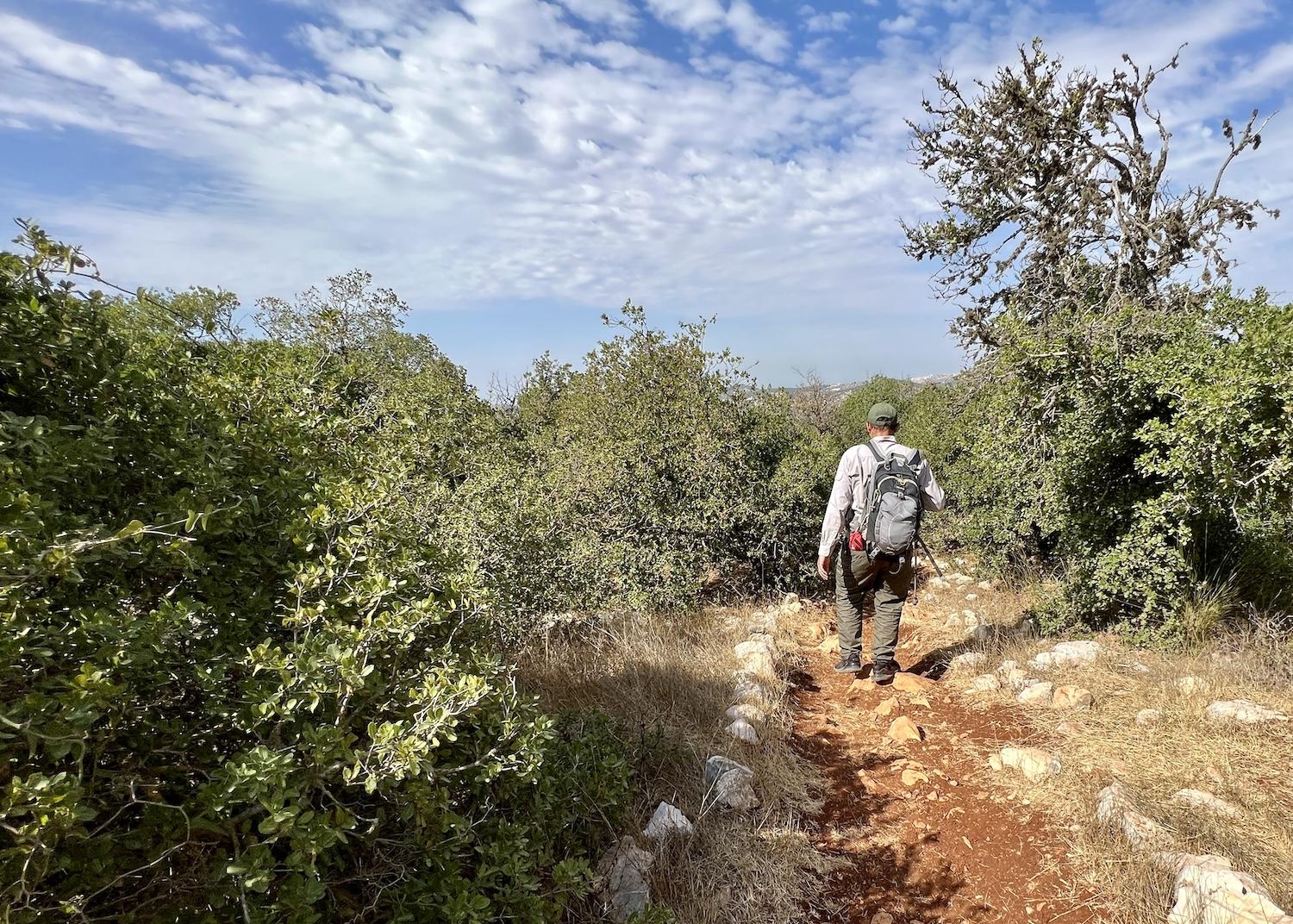
In a country dominated by desert, Jordan's Ajloun Forest Reserve stands out for protecting open woodlands full of evergreen oak, pine, carob, wild pistachio and wild strawberry trees/Jennifer Bain
Over five days criss-crossing the country, I made it to two RSCN spots — Ajloun Forest Reserve in the north and Dana Biosphere Reserve in the south.
Established in 1987, Ajloun covers a modest 12 square kilometres (about five square miles) in the Ajloun highlands north of Amman. It boasts a Mediterranean-like hill country with winding valleys. Evergreen oaks thrive here, alongside wild pistachio and strawberry trees.
In the heat of the afternoon, we didn’t spot wild boar, stone martens, golden jackals or red foxes. And while we started out on Roe Deer Trail, we didn’t see the locally extinct animal that was reintroduced through captive breeding.
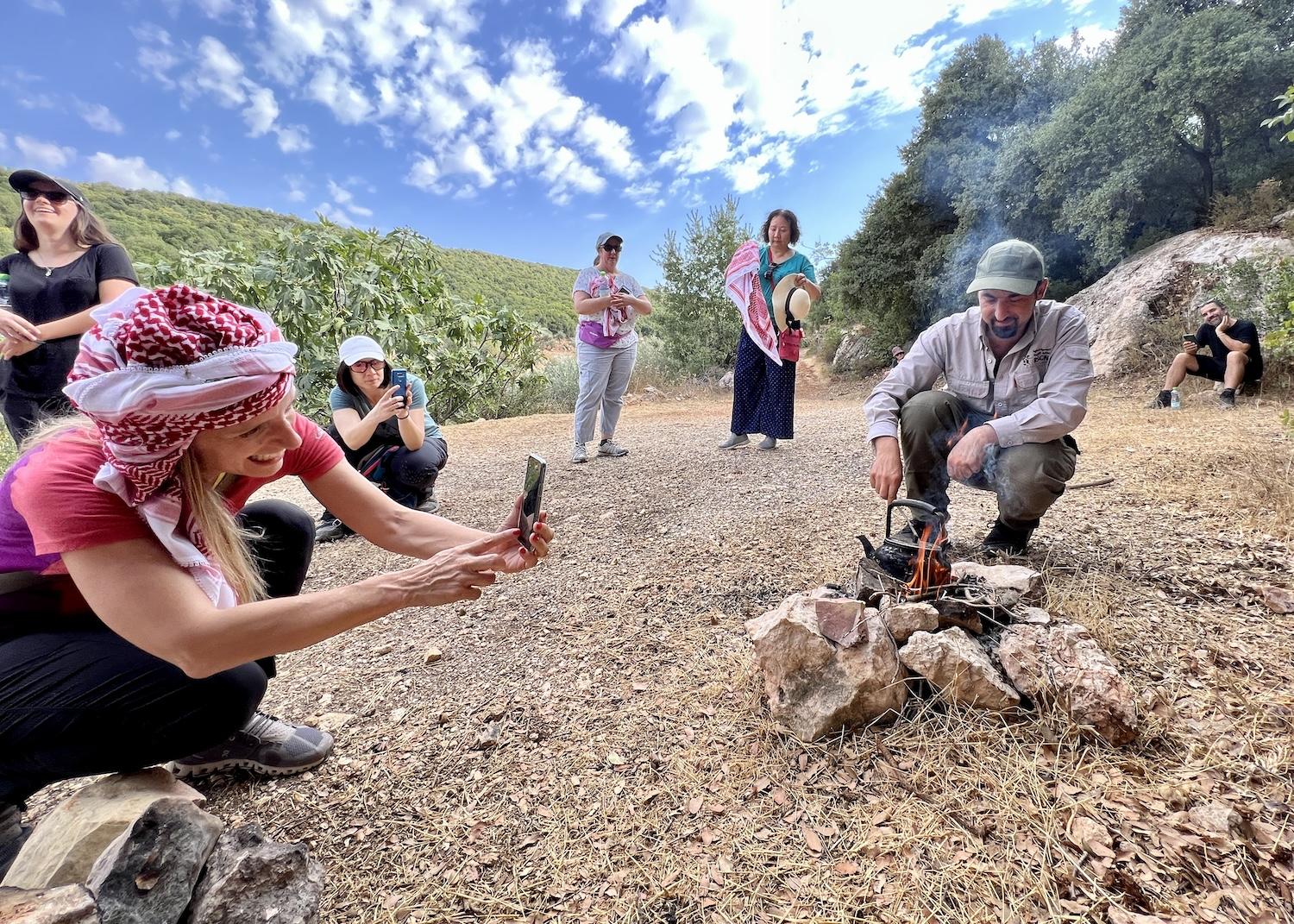
In Ajloun Forest Reserve, RSCN guide Rafat Mohamed Ali Quduh makes tea for hikers/Jennifer Bain
“You can see animals by chance,” RSCN guide Rafat Mohamad Ali Quduh kept reminding us with the longest sentence he could speak in English. The rest of the time he enthusiastically identified plants and trees with just a word or two.
That leisurely hike was barely two hours but, like in Dana, included a special break. This time, the guide whipped a small black kettle out of his backpack, started a fire in a rock pit along the road, and served soothing “hospitality tea” made from local herbs.
I had seen the same tea — in flavors like Dana blend, sage and za’atar — at the reserve’s nature shop where it's sold under the RSCN's Wild Jordan brand alongside other local edibles and handicrafts.
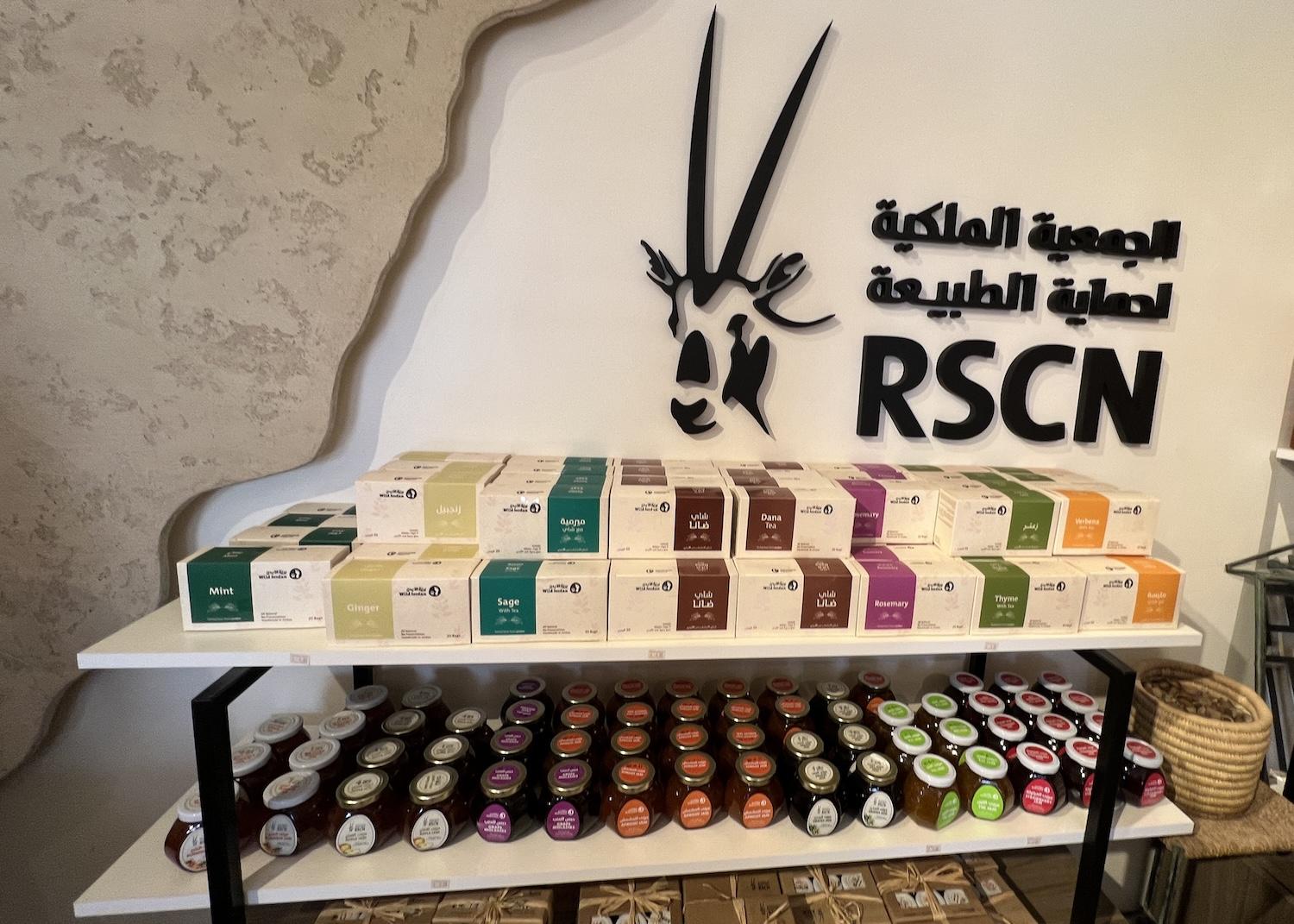
At Ajloun Forest Reserve's nature shop, the RSCN sells tea and other local products under the Wild Jordan brand/Jennifer Bain
I regret not being able to read colorful Arabic nature signs along the trail for a deeper understanding of the landscape, but did appreciate the rules posted in English by the visitor center.
No picnics, alcohol or pets. Don’t collect rocks, plants or animals. Stay on the trail with the guide. Only make fires in designated areas. Above all: “Please be quiet around and inside the reserve," the sign implored. "Noises and stress can disturb wildlife.”
We didn't see any animals or — come to think of it — any fellow hikers that afternoon. But we spotted the cabins you can rent and caught glimpses of a few unidentified birds. Mostly, we relished the chance to stretch our legs and clear our heads in the forest after a hot and crowded visit to the ancient city of Jerash to see the ruins of a walled Greco-Roman settlement, and a hearty lunch at a women-led social enterprise called Beit Khairat Souf.
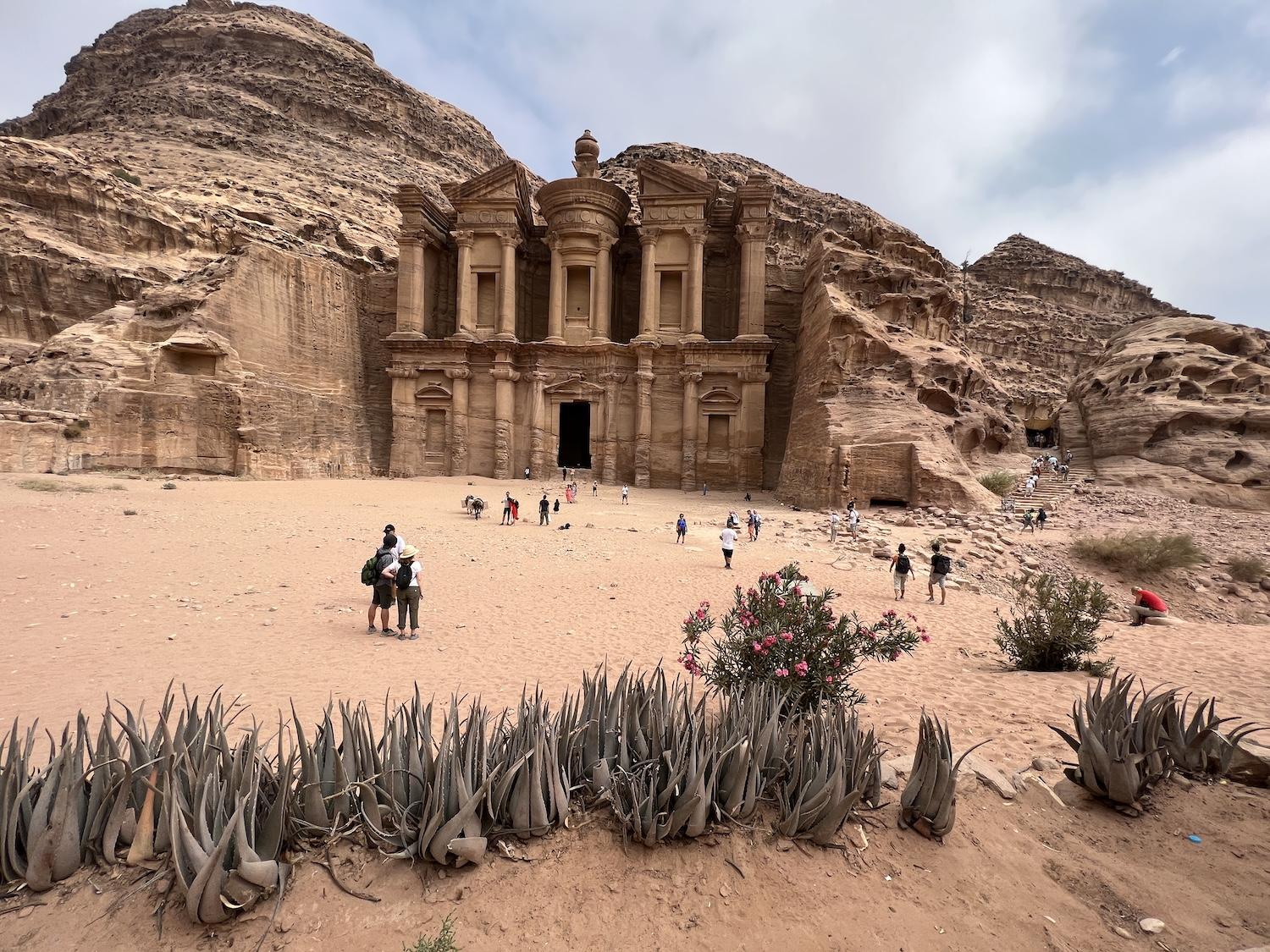
Everybody who visits Jordan goes to Petra to see ancient buildings, like this Monastery, carved out of the rock/Jennifer Bain
From Ajloun, we drove south through Amman, Mount Nebo and Madaba to Dana Biosphere Reserve, which many skip in the rush to get to Petra, the archaeological site in the desert where tombs and temples are carved into sandstone cliffs and where scenes from the 1989 blockbluster Indiana Jones and the Last Crusade were filmed.
Established in 1989 to protect the area from mining, Dana is Jordan’s largest nature reserve and covers about 300 square kilometres (116 square miles) along the face of the Great Rift Valley. Mountain ridges, cut by steep-sided wadis (dried river valleys), are dotted with trees and shrubs and give way to the desert lowlands of Wadi Araba. There are dramatic elevation changes and the geology switches between limestone, sandstone and granite.
Dana is on a tentative list for UNESCO World Heritage Site consideration. It embraces four bio-geographical zones — Mediterranean, Irano-Turanian, Sudanian and Suharo Arabian — and protects archaeological sites and ancient copper mines. Some of it reminds me of the hoodoos (rock spires formed by erosion) and coulees (steep-sided valleys) found in Alberta's Badlands.
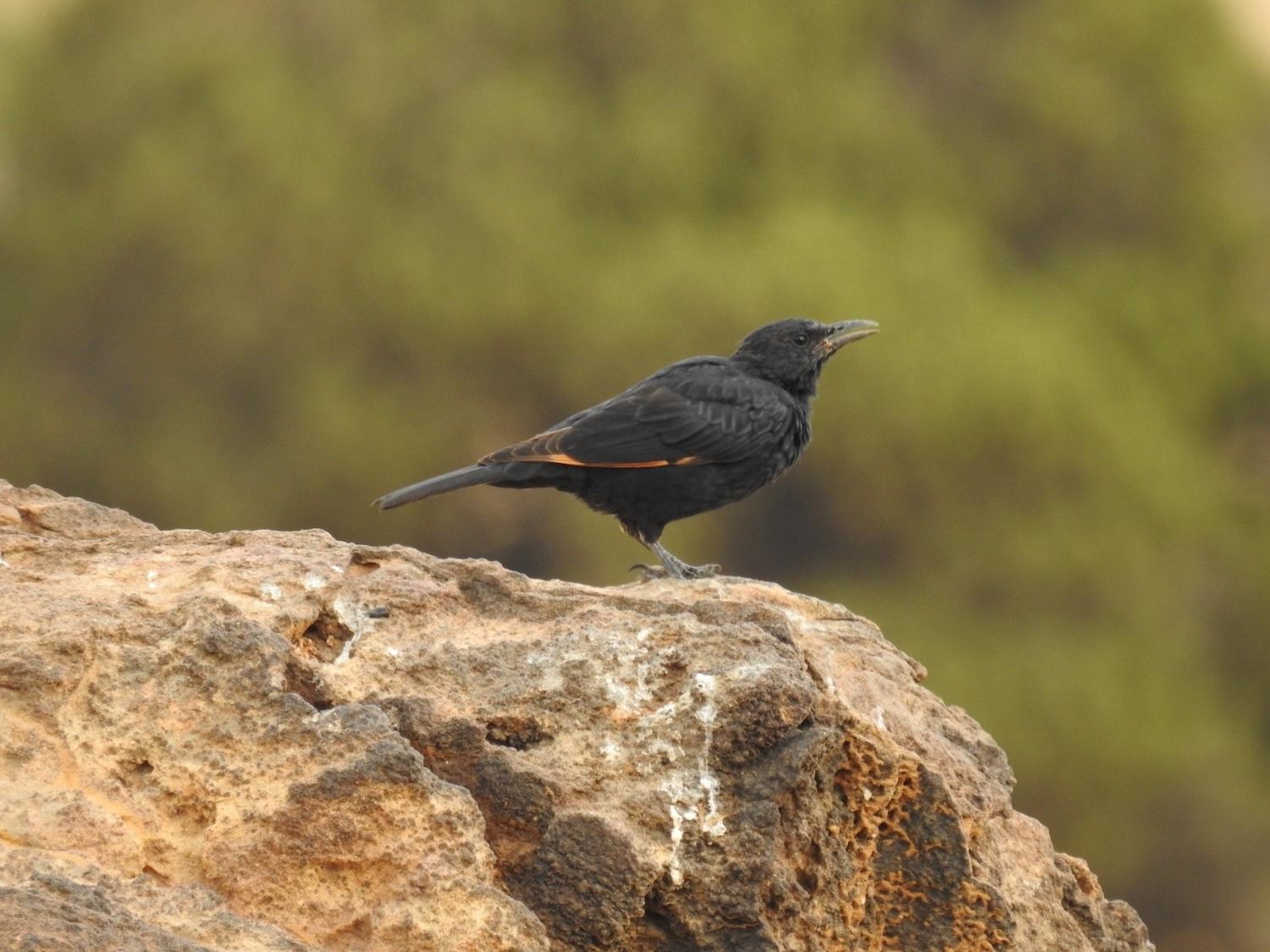
In Dana Biosphere Reserve, a noisy Tristram's starling (Dead Sea starling) enjoys the October heat/Jennifer Bain
Wild Jordan calls Dana a “melting pot” of plants, birds, mammals and reptiles from Europe, Africa and Asia. The reserve is home to at least 891 species of plants and 215 species of birds and 255 mammals and invertebrates.
We didn't stay long enough to spot endangered sand cats, Syrian wolves, Lesser kestrels or spiny-tailed lizards. But we did admire Phoenician juniper in an Important Bird Area that endures cold winters and sometimes even sees snow.
When we arrived at Dana, I admittedly wolfed down the buffet lunch but that was to watch gregarious and noisy black birds with orange wing panels. What the RSCN staff dismissed as mere grackles were actually Tristram’s starlings (aka Dead Sea starlings or Tristram’s grackles).
After that gentle hike marked by two minutes of silence was done, we were treated to sage tea before hopping in an army-style truck that whisked us up bumpy roads back to our bus.
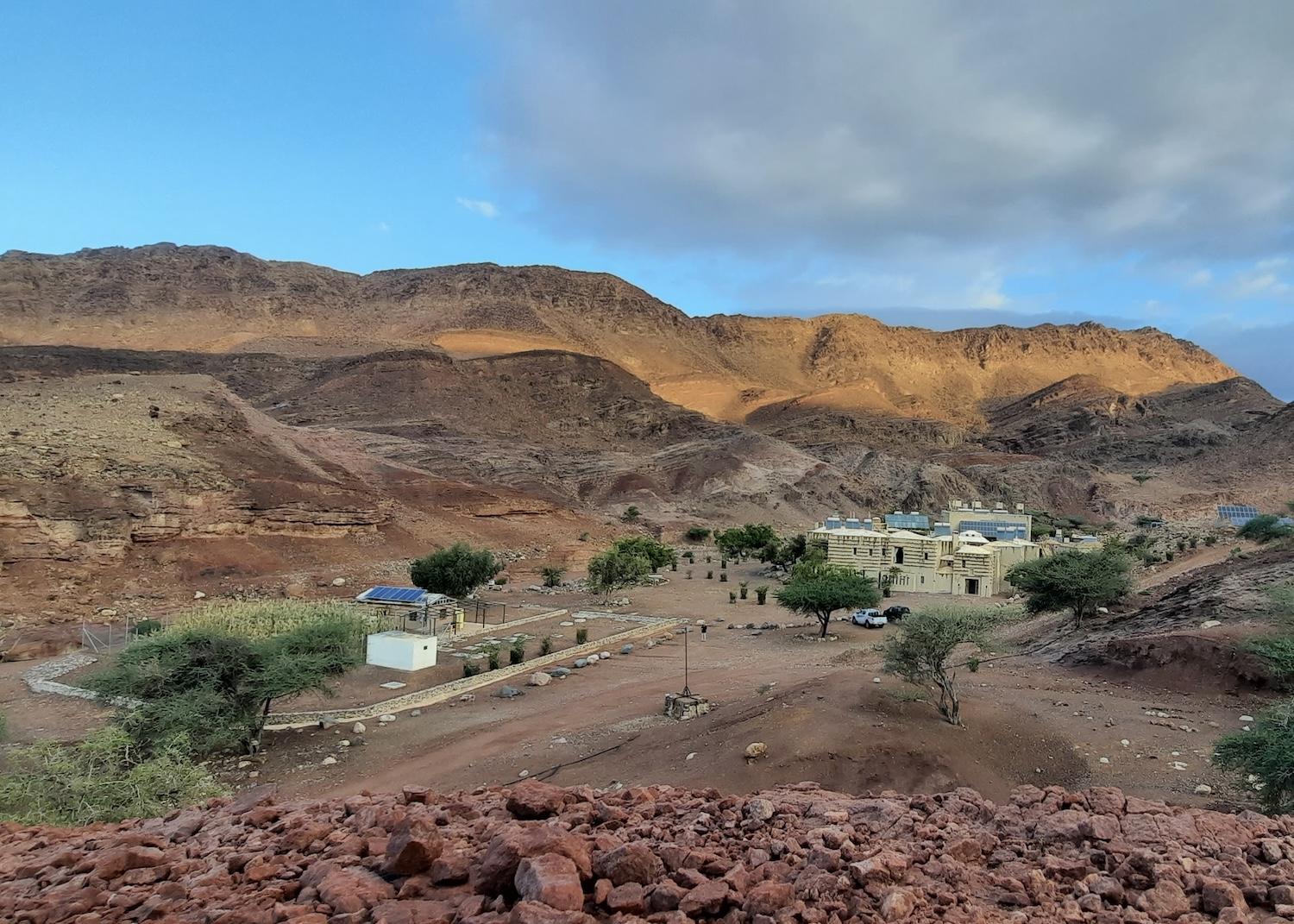
Feynan Ecolodge is an off-grid experience in Dana Biosphere Reserve in Jordan/Feynan Ecolodge
But there was one more Dana moment to come.
The next night after a day-long hike at Petra and a late lunch feast starring mansaf (the Jordian national dish made from goat, rice and fermented yogurt sauce) at a local family’s home — an experience offered by A Piece of Jordan — we transferred first to a mini bus and then into 4X4 pickup trucks for a journey to Feynan Ecolodge.
The 26-room off-grid lodge, at the southwest edge of Dana, generates most of its energy needs from the sun and is lit by candles and the stars at night. Owned by the RSCN and operated by EcoHotels, Feynan has received countless awards since opening in 2005. Jordanian architect Ammar Khammash was inspired by a caravanserai — a resting point or inn along ancient Silk Road routes.
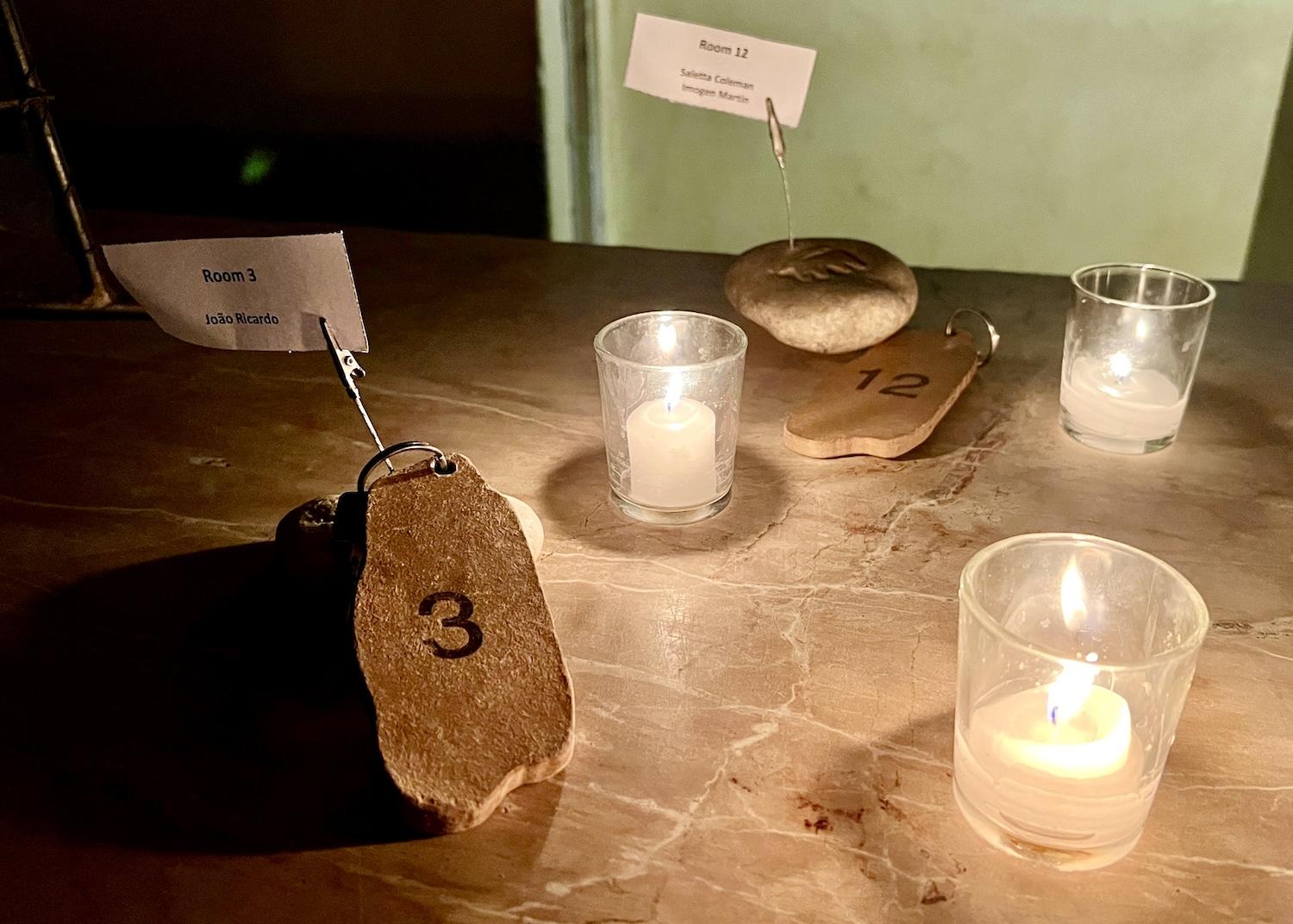
The lights were out when we arrived at RSCN's Feynan Ecolodge in Dana Biosphere Reserve and collected our room keys/Jennifer Bain
We arrived at 8 p.m. and left at 8 a.m., but made the most of our limited time. There was a vegetarian dinner, orientation and stargazing on the rooftop. The next morning, a few of us rose at 6 for a hike, determined to at least see Dana's multicolored mountains, dunes and rocky outcrops one more time.
The ecolodge, marketing and business development executive Abeer Tannous stressed, is “an experience, not just a place to stay.” Locals are hired as staff and drivers. Bedouin families who live in the desert host guests for tea and activities like making goat hair tents and creating a plant-based eye cosmetic called kohl.
In a perfect world, I would have spent a day with a Bedouin shepherd caring for goats but instead I just tried to sleep between stargazing and hiking. Barking dogs — both wild and those belonging to the reserve's neighbors — clearly didn't get the memo about Feynan's desire to be "a tranquil place" between 10 p.m. and 7 a.m.
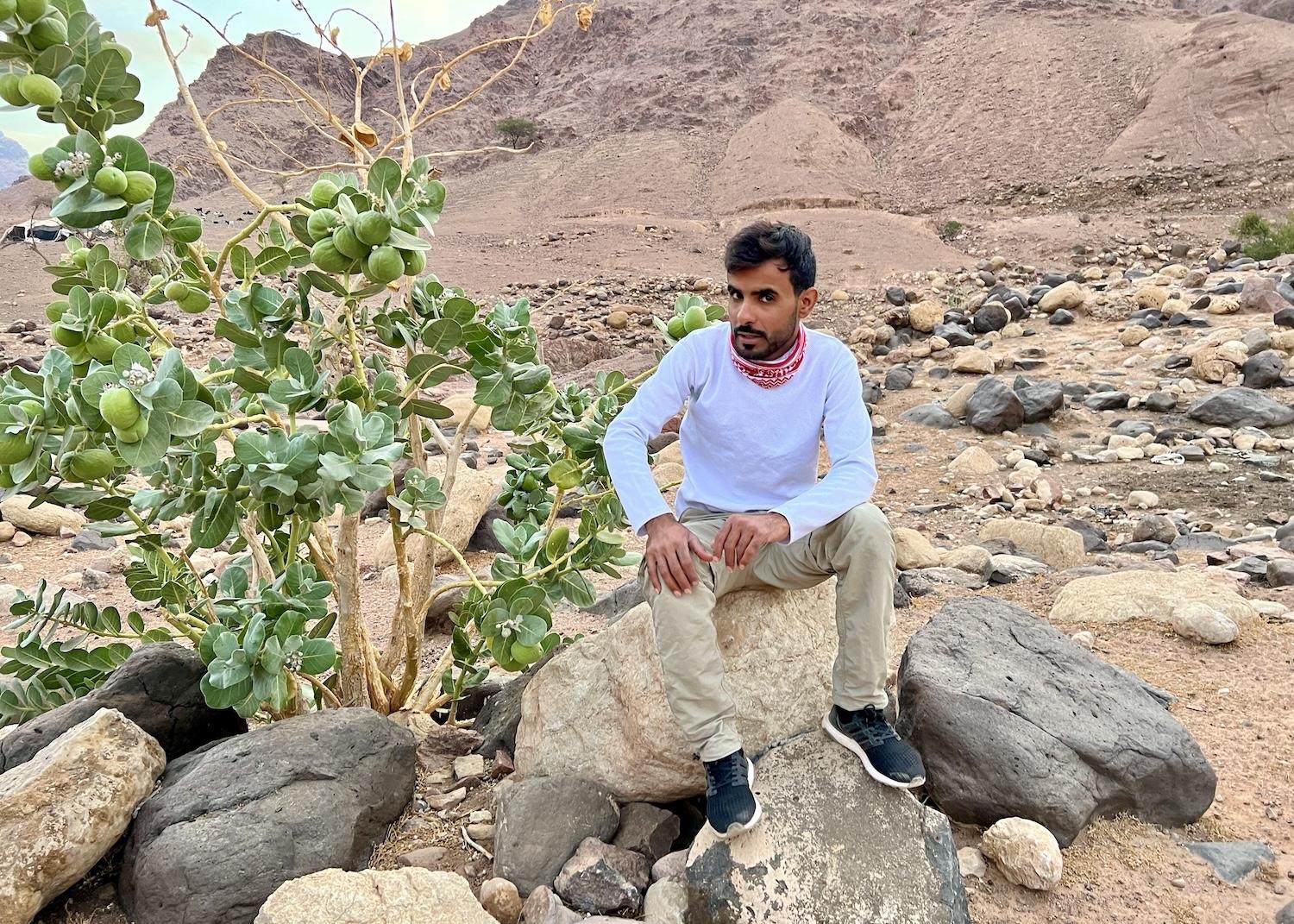
At Feynan Ecolodge, local guide Mohamed Zanoon leads sunrise and sunset hikes through Dana Biosphere Reserve/Jennifer Bain
Dogs aside, I'll never forgot how Jordan reminded me to slow down and inject silence into my daily life.
It's a lesson that began gently on that mountain in Dana and continued, more chaotically, at the Arab Medical Center in Amman. That's where I spent the last three days of my trip when an "unknown pathogen" knocked me to my knees, threw my potassium dangerously out of whack and even caused hallucinations when I closed my eyes.
At first my IV was tethered to my bed and so I couldn't even go to the bathroom without buzzing a nurse. When "Dr. Mo" okayed an IV stand with wheels, I relished short "hikes" to the loo and tried not to think about how I missed precious time at the Wadi Rum Protected Area desert — of Lawrence of Arabia fame — while lying in a dark room at Saraya Rum Private Luxury Camp.
With nobody to talk to at the hospital except for the nurses and cleaners, I mostly lay in silence. Nothing has ever tasted as good as the chicken, rice and carrots did when the gastroenterologist finally okayed solid food. No beverage has soothed me like the sage tea that arrived with that lunch and transported me back to those Ajloun and Dana hikes.
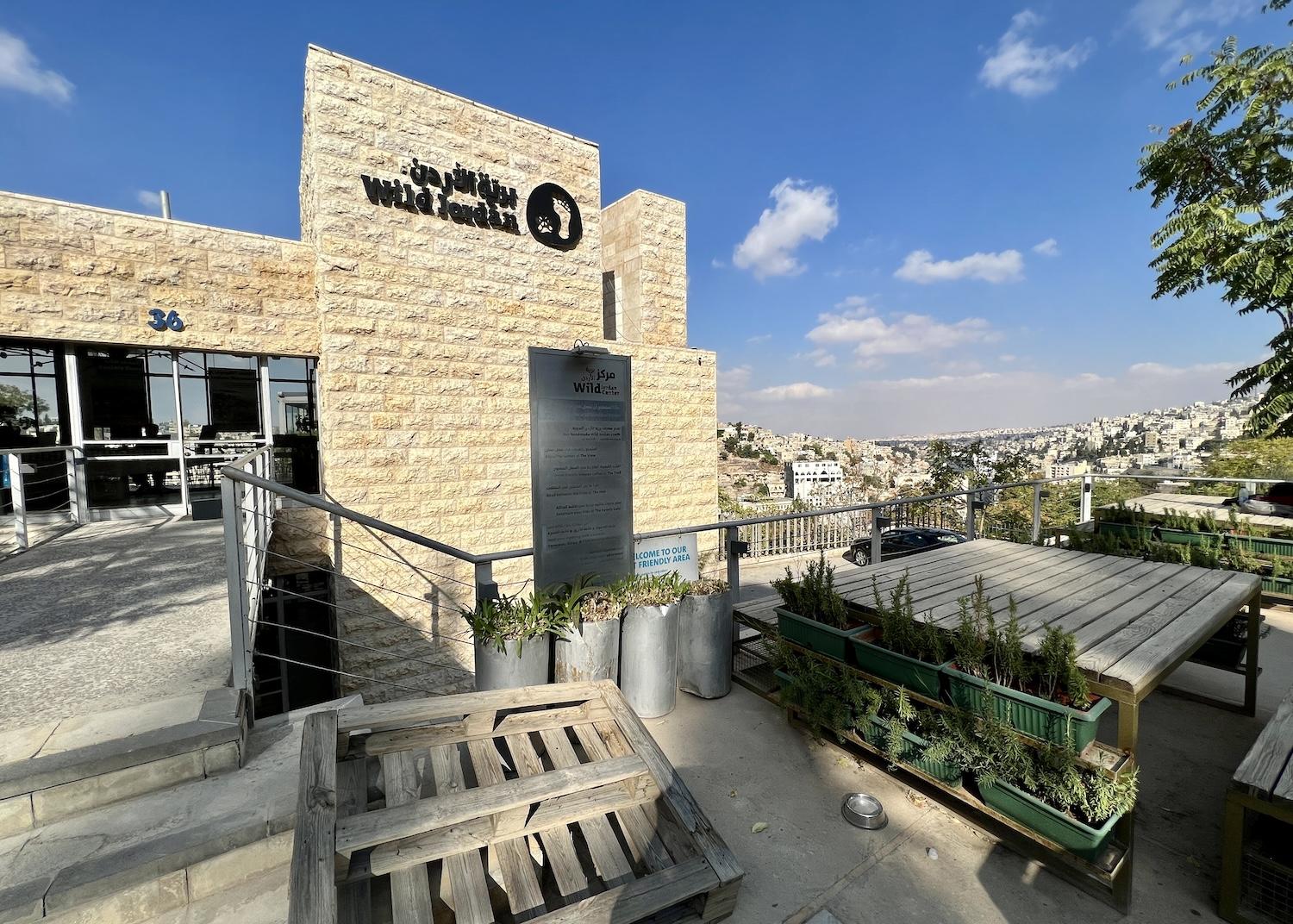
The Royal Society for the Conservation of Nature's Wild Jordan Center overlooks the old city of Amman and boasts a cafe and gift shop/Jennifer Bain
When I was finally discharged, I stood shakily in the sunshine while deciding there was somewhere I had to go before packing up my things at the InterContinental Amman for the long flight back to Canada.
The Wild Jordan Center, overlooking the old city of Amman, is the urban heart of the Royal Society for the Conservation of Nature. Ecotourists can learn about Jordan's nature reserves and dine in the café, but I simply wanted to browse in the nature shop, which is bigger than the one at Ajloun and showcases artisan products that help people who live in and near the reserves earn a living.
I reached for a box of sage herbal tea that was grown by local farmers and packed into hand-embroidered bags. Sage, long considered nature's treatment for digestive problems, certainly helped when my outdoor adventure became a medical adventure. The package had one final message for me: "The Latin name for sage, salvia, means `to heal.'"
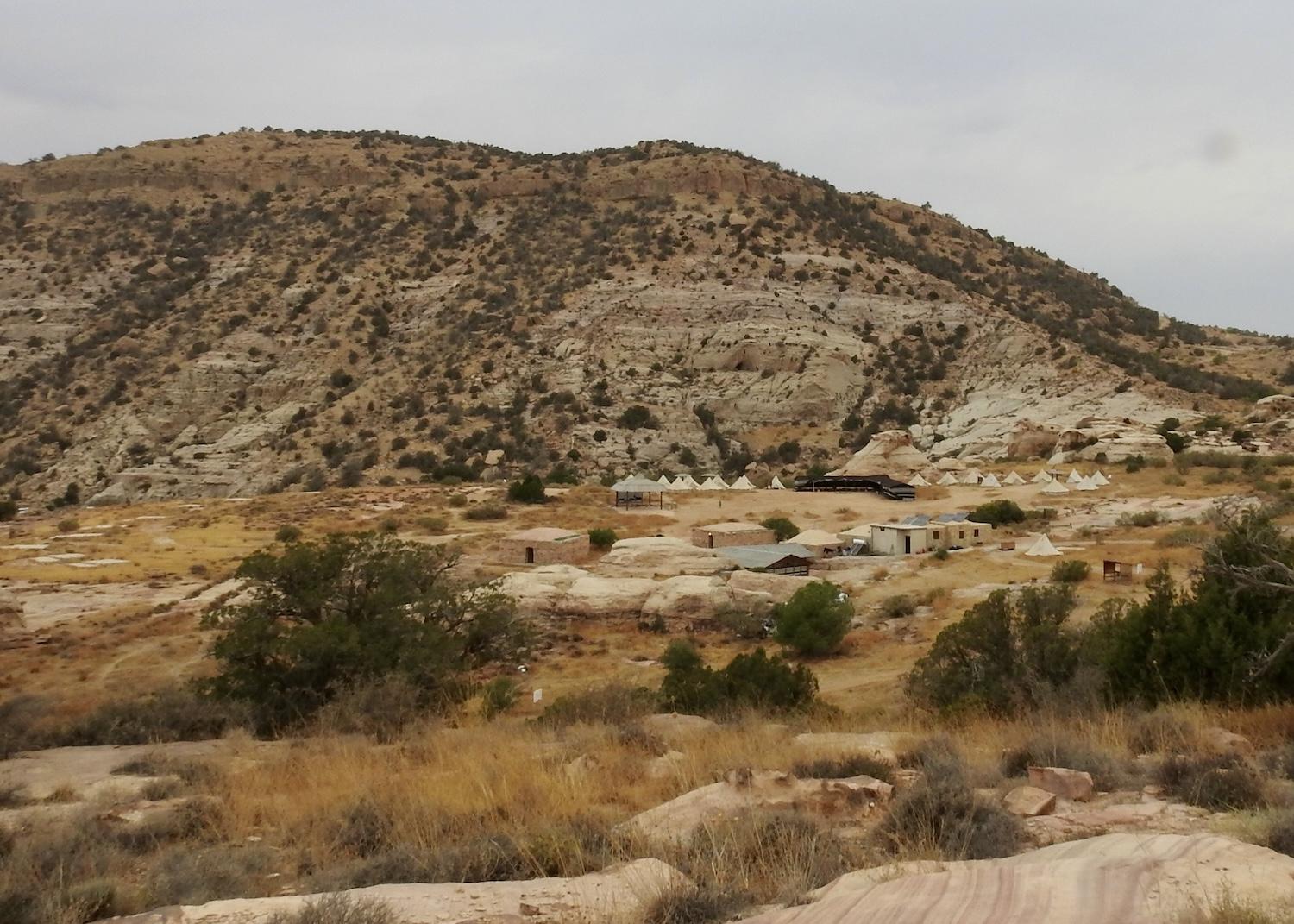
At Dana Biosphere Reserve, we had tea at the Rummana Campsite after a hike that included a moment of silence/Jennifer Bain


